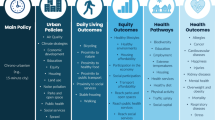Abstract
The transportation impacts of center-based telecommuting for 24 participants (representing 69 person-days of travel and 295 trips) in the California Neighborhood Telecenters Project are analyzed. Comparing non-telecommuting (NTC) day to telecommuting (TC) day travel shows that person-trips did not change significantly, whereas vehicle-trips increased significantly (by about one trip) on TC days. Both PMT and VMT decline significantly on TC days: by an average of 68 miles (74%) and 38 miles (65%), respectively. When these savings are weighted by the frequency of telecommuting, overall reductions in PMT and VMT come to 19% and 17%, respectively, of total weekday travel. Commute trips increase slightly (by 0.5 trips) but significantly, mainly due to lunch-time trips made home from the telecenter. Total non-commute travel does not increase, but there is a significant shift from other modes to driving alone on TC days. Commute mode split on NTC days is not affected by telecommuting. Travel on TC days tends to be compressed into fewer hours. Higher numbers of return home, eat meal, shopping, and social/recreational trips are made on TC days, in exchange for a reduction (to zero) in the number of change mode trips.
Similar content being viewed by others
References
Bagley MN, Mannering, JS & Mokhtarian PL (1994) Telecommuting Centers and Related Concepts: A Review of Practice. Research Report UCD-ITS-RR-94-04, University of California, Davis, Institute of Transportation Studies, March.
Buckinger C, Mar F, Mokhtarian P & Wright J (1997) Telecommuting Centers in California: 1991-1997. Prepared for the Federal Highway Administration and the California Department of Transportation Office of Traffic Improvement. Research Report UCD-ITS-RR-97-16, Institute of Transportation Studies, University of California, Davis, September.
Henderson DK, Koenig BE & Mokhtarian PL (1996) Using travel diary data to estimate the emissions impacts of transportation strategies: The Puget Sound Telecommuting Demonstration Project. Journal of the Air and Waste Management Association 46(1): 47-57.
Henderson DK & Mokhtarian PL (1996) Impacts of center-based telecommuting on travel and emissions: Analysis of the Puget Sound Demonstration Project. Transportation Research D 1(1): 29-45.
Koenig BE, Henderson DK, & Mokhtarian PL (1996) The travel and emissions impacts of telecommuting for the State of California Telecommuting Pilot Project. Transportation Research C 4(1): 13-32.
Mokhtarian PL (1991) Telecommuting and travel: State of the practice, state of the art. Transportation 18(4): 319-342.
Mokhtarian PL (1998) A synthetic approach to estimating the impacts of telecommuting on travel. Urban Studies 35(2): 215-241.
Mokhtarian PL, Balepur N, Derr M, Ho C-I, Stanek D, & Varma K (1996) Residential Area-Based Offices Project: Interim Findings Report on the Evaluation of Impacts. Institute of Transportation Studies, University of California, Davis, Research Report No. UCD-ITS-RR-96-11, November.
Mokhtarian PL, Handy SL & Salomon I (1995) Methodological issues in the estimation of travel, energy, and air quality impacts of telecommuting. Transportation Research A 29A(4): 283-302.
Mokhtarian PL & Henderson DK (forthcoming) Analyzing the travel behavior of home-based workers in the 1991 Caltrans Statewide Travel Survey. Journal of Transportation and Statistics.
Mokhtarian PL & Salomon I (1997) Modeling the desire to telecommute: The importance of attitudinal factors in behavioral models. Transportation Research A 31(1): 35-50.
Pendyala R, Goulias K, & Kitamura R (1991) Impact of telecommuting on spatial and temporal patterns of household travel. Transportation 18(4): 383-409.
Salomon I (1985) Telecommunications and travel: Substitution or modified mobility? Journal of Transport Economics and Policy 19(3): 219-235.
Stanek DM & Mokhtarian PL (1998) Developing models of preference for home-based and center-based telecommuting: Findings and forecasts. Technological Forecasting and Social Change 57(1/2): 53-74.
Varma KV, Ho C-I, Stanek DM, & Mokhtarian PL (forthcoming) The duration and frequency of telecenter use: Once a telecommuter, always a telecommuter? Transportation Research C.
Author information
Authors and Affiliations
Rights and permissions
About this article
Cite this article
Balepur, P.N., Varma, K.V. & Mokhtarian, P.L. Transportation impacts of center-based telecommuting: Interim findings from the Neighborhood Telecenters Project. Transportation 25, 287–306 (1998). https://doi.org/10.1023/A:1005048329523
Issue Date:
DOI: https://doi.org/10.1023/A:1005048329523




